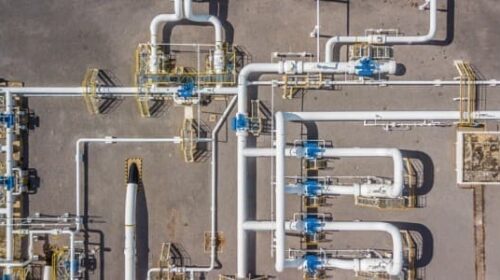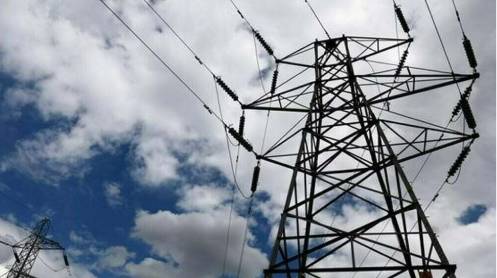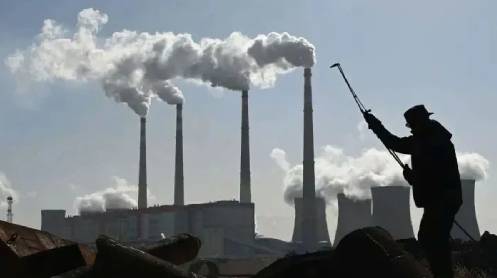We know that historically, many economies around the world have collapsed. We also know that there is a physics reason why this happens. Growing economies require a growing supply of energy to keep up with a growing population. At some point, the energy supply and other resource needs cannot grow rapidly enough to keep up with population growth. When this happens, economies tend to collapse.
In their book Secular Cycles, researchers Peter Turchin and Sergey Nefedov found that economies tend go through four distinct phases in each cycle, with each stage lasting for quite a few years:
- Growth
- Stagflation
- Crisis
- Inter-cycle
Based on my own analysis, the world economy was in the Growth Stage for much of the time between the Industrial Revolution and 1973. In late 1973, oil prices spiked, and the world was put on notice that the energy supply could not continue rising as rapidly as in the past. Between 1973 and 2018, the world economy was in the Stagflation Stage. Based on current data, the world economy seems to have entered the Crisis Stage about 2018. This is the reason for saying that headwinds are beginning to hold the economy back in the title of this article .
When the Crisis Stage occurs, there are fewer goods and services per capita to go around, so some participants in the world economy must come out behind. Conflict of all kinds becomes more likely. Political leaders, if they happen to discover the predicament the world economy is in, have little interest in making the predicament known to voters, since doing so would likely lead them to lose the next election.
Instead, the way the physics-based self-organizing economic system works is that alternative narratives that frame the situation in a less frightening way gain popularity. Political leaders may not even be aware of how dependent today’s economy is on fossil fuels. Researchers may not be aware that their “scientific” models are misleading because they look at too small a portion of the overall system and make unwarranted assumptions.
In this post, I show evidence that the economy is reaching energy limits. In the last section, I explain how my view differs from the standard narrative, which says that there is almost an unlimited amount of fossil fuels available to burn, if we choose to utilize these fossil fuels. According to this view, humans can prevent climate change by voluntarily moving away from fossil fuels.
The standard narrative proposes a reasonable plan for citizens of parts of the world without adequate fossil fuels (cut back on buying fossil fuels), but without telling citizens what the real problem is. The standard narrative also gives the impression that there is a near-term clean energy alternative. In my opinion, this is wishful thinking for the reasons I describe in Sections [6] and [7]. Section [2] also sheds light on the reasonableness of moving to renewable energy.
[1] The world has been warned, at least twice, that collapse might occur about now.
Back in the 1950s, several physicists, including M. King Hubbert, became interested in the limits that the world was up against. The military became interested in the problem, as well. In 1957, Admiral Hyman Rickover of the US Navy gave a very insightful speech. One thing Admiral Rickover said was, “With high energy consumption goes a high standard of living.” Another thing he said was, “A reduction of per capita energy consumption has always in the past led to a decline in civilization and a reversion to a more primitive way of life.”
Regarding the future, he said,
For it is an unpleasant fact that according to our best estimates, total fossil fuel reserves recoverable at not over twice today’s unit cost are likely to run out at some time between the years 2000 and 2050, if present standards of living and population growth rates are taken into account.
The issue Admiral Rickover is pointing out is that as extraction costs rise, fossil fuels become increasingly unaffordable. If citizens cannot afford food, housing, and other basic goods made with high-cost fossil fuels, those fossil fuels will be left in the ground. If politicians try to pass the high cost of extraction on to consumers, it will cause inflation. Citizens will become unhappy with politicians and will vote them out of office. This is basically our problem today.
A second analysis that pointed to the current time frame for the world hitting fossil fuel limits is given in the 1972 book, The Limits To Growth by Donella Meadows and others. This analysis used computer modeling to look at several alternative future scenarios, considering resources available and population trends. The base scenario showed resource limits in general hitting sometime around 2020. The economy would collapse over a period of years after resource limits were hit.
[2] The Industrial Revolution in England is an example of how an economy changes for the better when fossil fuel energy is added.
Figure 1 shows a chart E. A. Wrigley shows in his book, Energy and the English Industrial Revolution:

Wrigley observes that when coal was added to the economy, it was possible to make far more metal tools than had been made in the past. With the use of metal tools instead of wood tools, farmers could be three times as productive. Thus, there didn’t need to be as many farmers, freeing some farmers for other occupations. Also, roads to coal mines were paved, in an era when few roads were paved. These paved roads were beneficial to other businesses and to the economy as a whole.
Another reason for coal to be of interest was because of increased deforestation near cities, as the population grew. This deforestation led to a need to transport firewood over long distances. Coal was more compact, and so easier to transport. Furthermore, the use of coal prevented having to cut down as many trees, helping the environment.
Figure 1 shows that energy from wind and water were only a tiny part of the economy, both before and after coal was added. They did not directly provide heat energy, which was a significant share of what the economy needed at that time.
[3] The period between the end of World War II and 1973 was another period when energy consumption per capita was rising rapidly. We might say the economy then had an “energy tailwind.”
Figure 2 shows that US energy consumption per capita was rising rapidly in the 1949 to 1973 period. Growing oil, coal and natural gas consumption all contributed to the overall rise in fossil fuel use.

In fact, BP data (only available from 1965 onward) shows energy consumption per capita rising for most parts of the world between 1965 and 1973. During this period, oil, coal and natural gas consumption per capita were all rising.

A major thing that pushed oil consumption along was its low price (Figure 4). According to BP data, the inflation-adjusted price was only $11.99 per barrel in 1970. In 1971, it averaged $14.30 per barrel. The comparable price today is about $79 per barrel.

The average price for 1973 rose to the equivalent of $19.73 per barrel, which is still incredibly low relative to today’s prices. It is an annual average price, reflecting a low price at the beginning of the year and a much higher price toward the end of the year.
There were multiple issues behind the rise in oil prices, starting at the end of 1973. Part of the problem was the fact that US oil production began to fall in 1971, necessitating the use of more imported oil, year after year. Another issue was that world oil production could not keep up with the high demand, given the low price that oil was selling for. The Office of the Historian of the US writes the following:
By 1973, OPEC had demanded that foreign oil corporations increase prices and cede greater shares of revenue to their local subsidiaries. In April, the Nixon administration announced a new energy strategy to boost domestic production to reduce U.S. vulnerability to oil imports and ease the strain of nationwide fuel shortages. That vulnerability would become overtly clear in the fall of that year.
Without higher oil prices, it would be hard for local producers to make the investments needed to ramp up production. Also, taxes for governments in the areas where the oil was produced were falling too low, given the low prices that oil was selling for on the international market. Indirectly because of these problems, but supposedly also because of support for Israel by certain countries in the 1973 Arab-Israeli war, the Arab members of OPEC initiated an oil embargo. This embargo cut off exports to the US, Netherlands, Portugal, and South Africa from November 1973 until March 1974. It was at that time that world oil prices rose to a much higher level, and oil consumption per capita began to fall.
One thing that is striking about the period between World War II and 1973 is the huge advances in wages made by both the bottom 90% and the top 10% (Figure 5).

Between 1948 and 1968, inflation-adjusted income of both the bottom 90% and the top 10% increased by roughly 80%. This meant that many people in the bottom 90% could afford to buy cars and their own homes for the first time. Even in the period between 1968 and 1982, inflation-adjusted incomes kept up with inflation, something that low-income earners today have difficulty with. It was not until after about 1982 that wage disparity started to increase.
Most people remember the 1950s and 1960s as a favorable period for ordinary workers. Because of the higher wages of ordinary citizens and growing US manufacturing capabilities, the number of cars registered in the US rose from 25.8 million in 1945 to 75.3 million in 1965. The US initiated the 41,000 mile Interstate Highway System in 1956, so that auto owners would have multilane, limited access roads to travel on.
Electricity was sold in a conservative way, called the Utility Pricing System, which would hopefully assure that the whole system would be properly maintained. Utilities were typically owners of electricity generation units, plus all other local infrastructure, including transmission lines. Each utility would compute a total required rate for all its needs, including enough funds to install new generating capacity, provide fuel, and install and maintain transmission lines. A government regulator would approve the rates, but there was no real competition.
[4] In the period between 1973 and 2018, many changes were to increase energy efficiency and to lower the perceived cost to users. Unfortunately, some of these changes, when taken to the extremes they were taken to later in the period, tended to make the economy brittle and thus more subject to collapse.
Up until 1973, oil was being put to uses for which substitution could easily be made. One of these was electricity generation; another was home heating. An easy change in electricity generation was to build new generating facilities using an alternate fuel (coal, natural gas, or nuclear). Home heating could often be changed to natural gas or electricity.
Also, Japan already had automobiles that were smaller and more fuel efficient than American automobiles. These could be substituted for some of the large cars produced in the US.
Especially with the Reagan and Thatcher administrations starting shortly after 1980, there was more interest in cutting costs in electricity generation. “Competitive rating” instead of utility rating became popular in places where electricity prices were high. Utilities were broken up, and the various parts were encouraged to compete.
Of course, competitive rating, when taken to its extreme, can lead to the neglect of infrastructure. It was recently reported that California’s utility company, Pacific Gas and Electric, now finds that it must raise $50 billion for wildfire prevention, after years of neglecting maintenance on the long distance transmission lines used for hydroelectric generation and other long distance transmission. Now it needs to raise money to bury many of these lines underground.
It has long been known that added complexity can be helpful in working around problems of inadequate energy supply. Complexity involves many things including using more advanced technology and international trade. It involves bigger organizations to take advantage of economies of scale. It tends to require higher education for at least some of its workers.
One major disadvantage of growing complexity is the increasing wage disparity it tends to produce. Wages for less educated workers often fall quite low. Work in whole industries may disappear overseas, leaving workers to start over, in new lines of work, at lower pay scales.
Unfortunately, having many workers at low wages tends to push an economy toward collapse. The big issue is that these workers cannot afford goods like cars and new homes. Their lack of purchasing power tends to hold down commodity prices, such as the price of fossil fuels. Prices don’t rise high enough to justify new investment to raise production, so production slows down and eventually stops.
Another approach that gained popularity starting about 1981 was the increased use of debt and more exotic financial approaches. Interest rates were very high in 1981. Central banks could make monthly payments for goods such as homes and cars more affordable by lowering interest rates. This approach works for a while, but it reaches limits when interest rates fall too low relative to inflation rates. Furthermore, if an economy slows down, a major increase in debt defaults becomes likely, as became clear in 2008. With the high level of debt in the world economy today, the default problem could become even worse in 2023 or 2024 than it was in 2008, if the economy slows again.
[5] Since 2015, oil and natural gas investments have remained at low levels because oil prices have not been high enough to justify drilling in the remaining places.

In my opinion, oil companies really need quite high oil prices, probably $120 per barrel or higher, on a consistent basis, to justify drilling in sufficient new locations to ramp up oil production. Since 2014, prices have generally remained far below that level. There was a major drop in oil prices in 2014 and 2015. In response to the lower oil prices, oil and gas companies cut back on investment in “Exploration and Production” (E&P). (Figure 7)

After a drop in E&P investments, oil production does not drop immediately. Instead, 2018 was the single highest year of oil production. Production looks likely to drop further because of the continued lack of investment (Figure 8).

[6] If we look across the major types of energy supply, we discover that “Wind and Solar” is the only category rising significantly faster than world population. Others tend to be flat or falling, on a per capita basis.

In Figure 9, the star performer is the category “Wind + Solar.” The main attraction of wind and solar today is the subsidies they get, and the mandates that require utilities to move away from fossil fuels. Unfortunately, wind and solar really aren’t terribly helpful as far as I can see, except from the point of view of the benefit of the subsidies they provide.
One of the problems with intermittent wind and solar is that they tend to drive nuclear electricity providers out of business because of the favorable rates they receive when wind and solar are allowed to go first, in competitive rating schemes. With this arrangement, the wholesale rates that nuclear providers receive often fall to negative amounts. Nuclear providers cannot close down for short periods with negative rates, so they tend to need subsidies to remain open. Figure 9 shows that the supply of nuclear electricity has been dropping since at least 2001. In fact, of all the energy types shown on Figure 9, nuclear’s production (relative to population) is dropping fastest.
In my opinion, our primary energy concern should be food production and transport. Diesel, made from oil, is the major fuel for agriculture. It will be decades before farming machinery and transport of food can be changed over to electricity, assuming this can be done at all. Until this happens, electricity’s role in getting food to the shelves of grocery stores will be limited.
Solar energy comes primarily in the summer but, unfortunately, in many places, the big need for heat energy is in the winter. People in Europe, with their many wind turbines and solar panels, are worried about possibly freezing in the dark this winter if natural gas supplies prove inadequate. We don’t have batteries for storing solar or wind energy for months on end, so they cannot be counted on for winter heat.
When homeowners put solar panels on their roofs, the electricity they sell to the utility is often “net metered” (credited with the full retail value of electricity that this home would pay). This is a huge subsidy to the owners of the solar panels because the value of the intermittent electricity to the utility is far less than this, probably closer to the cost of the natural gas or other fuel saved.
To make up for the loss of revenue caused by the overly generous compensation to solar panel owners, the utility is forced to raise rates for those without solar panels. Studies show that homeowners with solar panels tend to be wealthier than the renters and others who do not have the opportunity to add these subsidized solar panels. Thus, this is an example of a benefit for rich homeowners being paid for by less wealthy buyers of electricity.
I would also argue that the BP data I used to produce Figure 9 tends to give an overly optimistic view of the value of wind and solar. The approach used indirectly assumes that they fully replace the entire system of dispatchable electricity used today, rather than providing only intermittent electricity. The less generous approach (giving a little less than half as much credit) is used by the International Energy Association and by many researchers.
Furthermore, solar panels tend to pollute ground water when they are disposed of, so they are not very clean. Wind turbines are noisy, take up farmland, and kill bats and birds, so they have serious drawbacks as well.
Wind and solar are made and transported using fossil fuels. They cannot last any longer than today’s fossil fuel industry. In fact, roads and transmission lines require fossil fuels to continue. The whole system is likely to go down at approximately the same time.
It seems to me that the main reason why we hear so much about intermittent wind and solar is because there needs to be a hopeful narrative for politicians to provide to voters, and for educators to provide to students. Otherwise, the situation shown on Figure 9 looks grim. The fact that fossil fuel prices have been spiking in 2022 and regulators are trying to get these prices back down again is testimony to the fact that we are running short of cheap-to-produce fossil fuel energy.
[7] The incorrect narrative provided by mainstream media (MSM) is that climate change is our worst problem. To lessen this problem, citizens need to move quickly away from fossil fuels and transition to renewables. The real narrative is that we are running short of fossil fuels that can be profitably extracted, and renewables are not adequate substitutes. However, this narrative is too worrisome for most people to handle.
I expect most readers will say, your view can’t be right. We don’t read this story in the news. All we hear about is climate change and the need to reduce fossil fuel usage to prevent climate change.
In many ways, the narrative presented by MSM is less frightening to the public than a narrative in which fuels are already being stretched too thin. The MSM narrative sounds like a situation that we can perhaps live with and work around. It sounds like careers that people study for today will be useful in the future. It also sounds like homes, cars and factories built today will be useful in the future.
One major difference in the MSM view, relative to my view, is with respect to the amounts of fossil fuels that can be extracted. The standard narrative says we will extract all the fossil fuels that we have the technology to extract unless we make a concerted effort not to extract these fuels. For this to happen, demand (a favorite word of economists) must keep rising to keep prices high enough for businesses to want to continue extraction from fields plagued by depletion.
History shows that when an economy approaches limits, what tends to happen is that demand tends to fall too low. This happens because the physics of the way the economy works: Wage and wealth disparities tend to spike as energy resources are increasingly stretched thin. In fact, the great wealth of the top 1%, relative to that of the remaining 99%, is a major problem in the world today. When increasing wage and wealth disparity occurs, a growing number of poor workers find themselves with inadequate wages to buy food, homes, cars and other goods made with commodities, including oil.
There are so many of these poor workers that their lack of demand tends to bring down commodity prices without government intervention. If these low wages are not sufficient to hold down commodity prices, politicians will raise interest rates to try to get commodity prices down, so they can be re-elected. It is low fossil fuel prices that will drive fossil fuel providers out of business.
Of course, another part of the MSM narrative is the view that renewables can save the system. I explained in Section [6] why this cannot be the case for wind and solar. I didn’t say much about hydroelectricity, but it is already built out in most of the developed world. Electricity from hydroelectric plants tends to be intermittent, with the greatest supply coming in the spring, when snow melts. Like wind and solar, hydroelectric generation plants are built and repaired using fossil fuels. These facilities, and their transmission lines, will last only until parts break that cannot be repaired.




